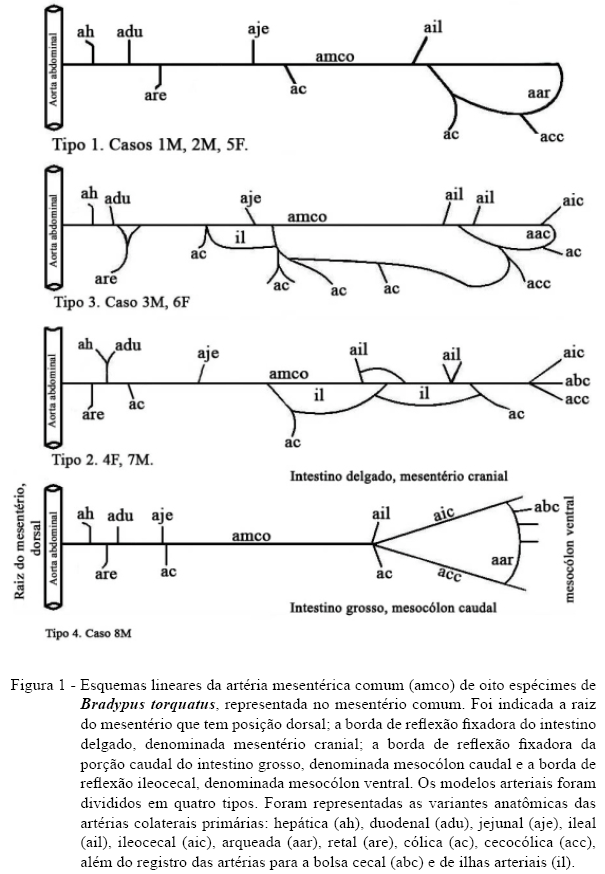The Bradypus torquatus also known as maned three-toed sloth is listed as vulnerable in the IUCN red list. This species is strict folivorous that feeds on a relatively small number of food plants. The blood supply in the small and large intestines of eight Bradypus torquatus was studied. These animals are from the Anatomia dos Animais Domésticos e Silvestres collection of the Universidade de São Paulo . The method included preparation of the macroscopic collection report, perfusion of the arterial network with water (40°C), injection of colored latex (Neoprene 650®, 2350-0003 Suvinil® dye), fixation in formaldehyde (10%), preservation in modified Laskowski solution and dissection under mesoscopic light (Lupa LTS® 3700). The blood supply of small and large intestine depends on the abdominal aorta, whose ventral visceral branch identified as the common mesenteric artery was distributed in the mesentery and mesocolon. A sequence of 9 to 25 primary collateral branches cranial is allocated to the duodenum, jejunum, ileum and part of the cecum. Another sequence of 4 to 11 caudal branches are destined to the cecum and colon pouch. The vascular pattern of adult maned three-toed sloth intestine differs from those of other previously described vertebrates, because there is no occurrence of coalescence peritoneal through small and large intestine.
angiology; mesenteric artery; Bradypodidae; digestive tract




